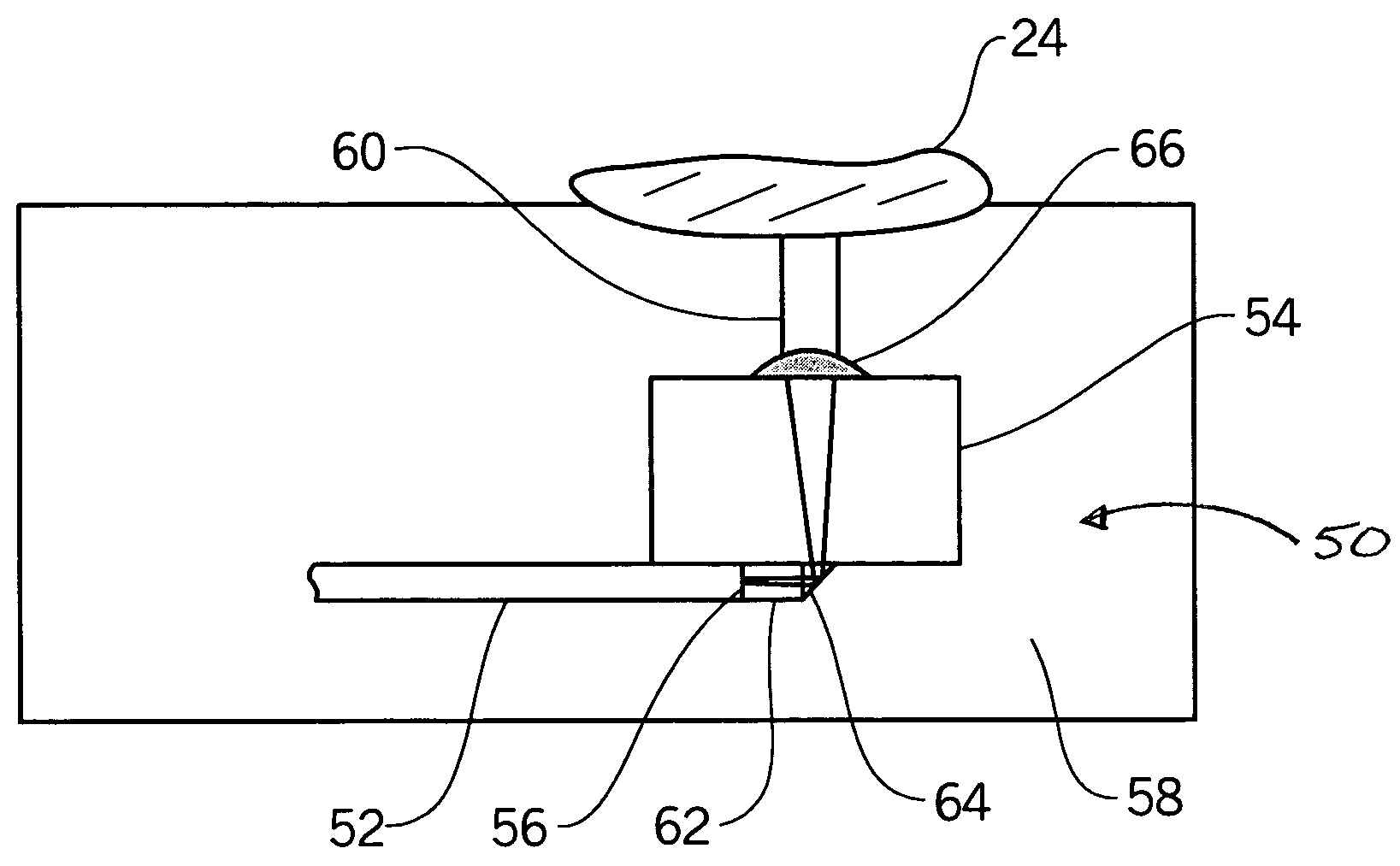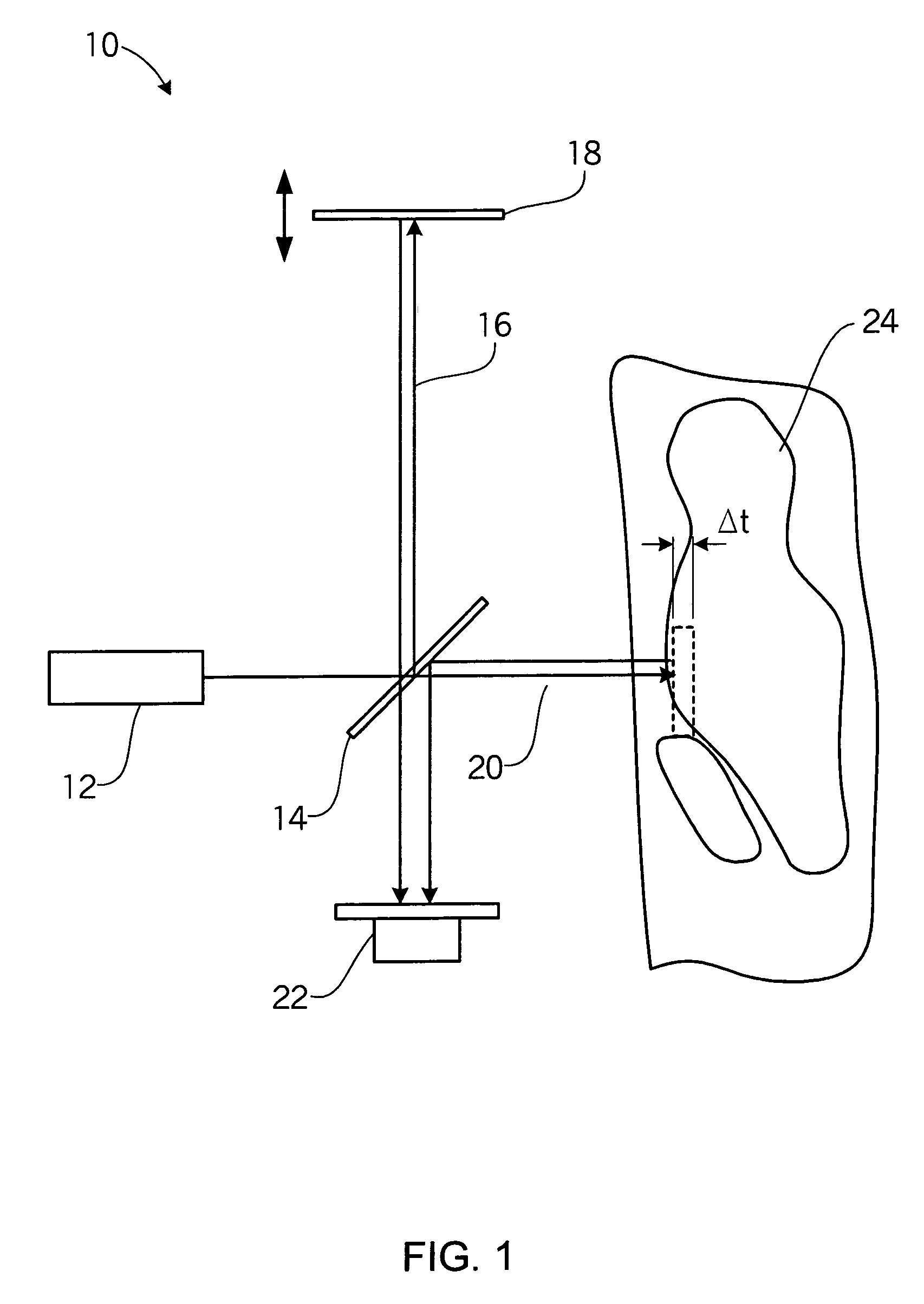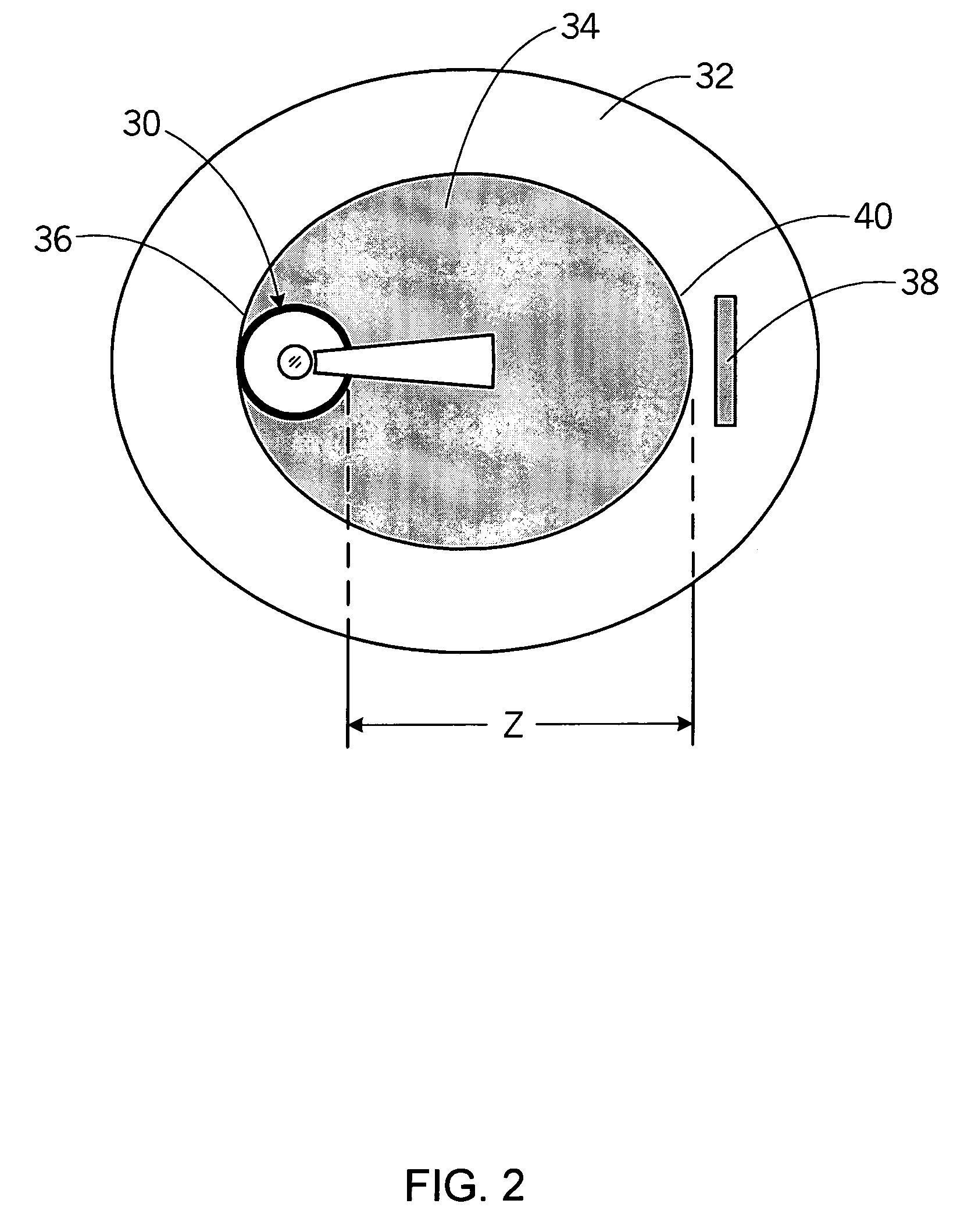Device for tissue characterization
a tissue and device technology, applied in the field of tissue characterization devices, can solve the problems of inability to see by visible light, certain types of vulnerable plaques in the vasculature of patients, and the risk of rupture of certain types of vulnerable plaques
- Summary
- Abstract
- Description
- Claims
- Application Information
AI Technical Summary
Benefits of technology
Problems solved by technology
Method used
Image
Examples
Embodiment Construction
[0032]The invention generally relates to a device and system that probes arterial tissue and a method of doing the same. In particular, the use of an optical element in a device over a portion of a light path reduces the optical path length through the blood, thereby increasing the signal-to-noise ratio. For example, FIG. 1 illustrates LCI, a system based on fiber optics, used to probe a tissue sample in blood. While FIG. 1 illustrates light in an interferometer propagating in free space, implementations based on fiber optics or waveguides may also be utilized. The LCI system 10 in FIG. 1 includes a broadband source light 12, a beamsplitter 14, a reference arm 16, a movable mirror 18, a sample arm 20, a detector system 22, and an object or tissue being examined 24. The beamsplitter 14 splits the source light 12 and directs it into two paths, a path that extends onto the tissue or object being measured along sample arm 20, and another path that reflects off the movable mirror 18 alon...
PUM
 Login to View More
Login to View More Abstract
Description
Claims
Application Information
 Login to View More
Login to View More - R&D
- Intellectual Property
- Life Sciences
- Materials
- Tech Scout
- Unparalleled Data Quality
- Higher Quality Content
- 60% Fewer Hallucinations
Browse by: Latest US Patents, China's latest patents, Technical Efficacy Thesaurus, Application Domain, Technology Topic, Popular Technical Reports.
© 2025 PatSnap. All rights reserved.Legal|Privacy policy|Modern Slavery Act Transparency Statement|Sitemap|About US| Contact US: help@patsnap.com



